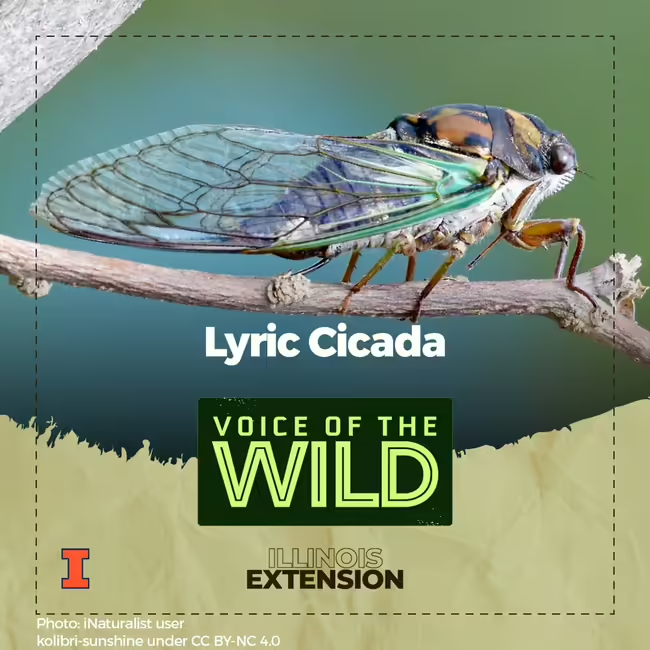
Episode Number
64
Episode Show Notes / Description
Lyric Cicada (Neotibicen lyricen).
The annual cicada with a consistent, unpulsed tone.
Do you want to learn more bird songs, frog calls, and insect noises? Join Voice of the Wild every Friday to explore a new wild voice. We’re available on most podcast platforms, including Apple Podcasts, Spotify, and YouTube.
- Subscription links Here
- Subscribe to the Newsletter
- Listen online on our Homepage
The following Cornell Lab | Macaulay Library recordings were used in this episode:
- Lyric Cicada call by Wil Hershberger (ML534518)
Sources and more:
Transcript
This is Brodie with Illinois Extension and I’m here with a new “voice of the wild”
Common across eastern North America and active from late June to early August, this cicada is, on average, a little darker than the other cicadas in their genus, usually with a black collar around the head and more bronze, brown, and dark red on the back. They also have a distinct dark stripe down the belly. You can find them wherever trees are plentiful, including urban parks and shaded neighborhoods. This is the lyric cicada.
The lyric cicada is likely to only be confused with the morning cicada, which can be about as dark, but has a rounder more hunched back. But the best way to identify the lyric cicada is the male’s song which is, Luckily, very unique; compared to the other common cicadas; it is a consistent tone that does not pulsate. And here it is again.
Thank you to the Macaulay library at the Cornell lab for today’s sound. Learn more about voice of the wild at go.illinois.edu/VOW
Common across eastern North America and active from late June to early August, this cicada is, on average, a little darker than the other cicadas in their genus, usually with a black collar around the head and more bronze, brown, and dark red on the back. They also have a distinct dark stripe down the belly. You can find them wherever trees are plentiful, including urban parks and shaded neighborhoods. This is the lyric cicada.
The lyric cicada is likely to only be confused with the morning cicada, which can be about as dark, but has a rounder more hunched back. But the best way to identify the lyric cicada is the male’s song which is, Luckily, very unique; compared to the other common cicadas; it is a consistent tone that does not pulsate. And here it is again.
Thank you to the Macaulay library at the Cornell lab for today’s sound. Learn more about voice of the wild at go.illinois.edu/VOW